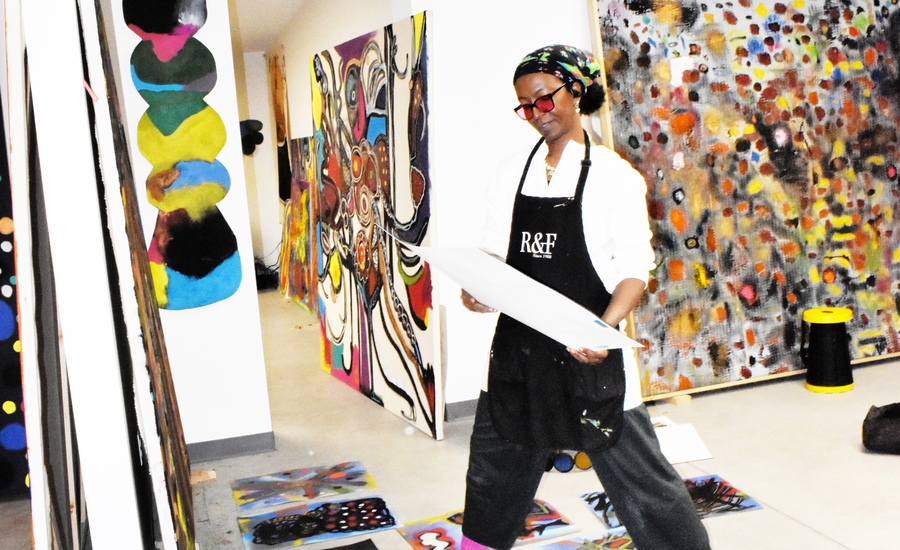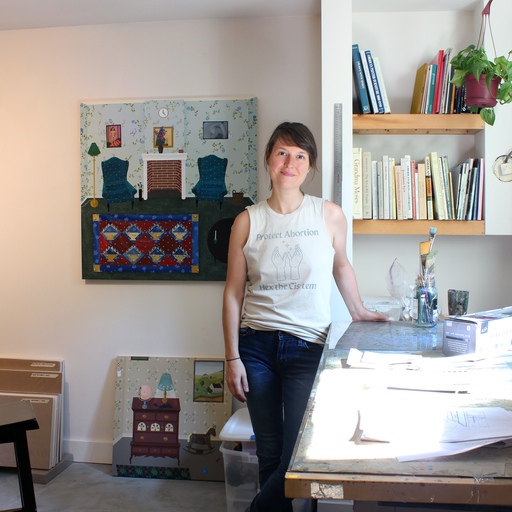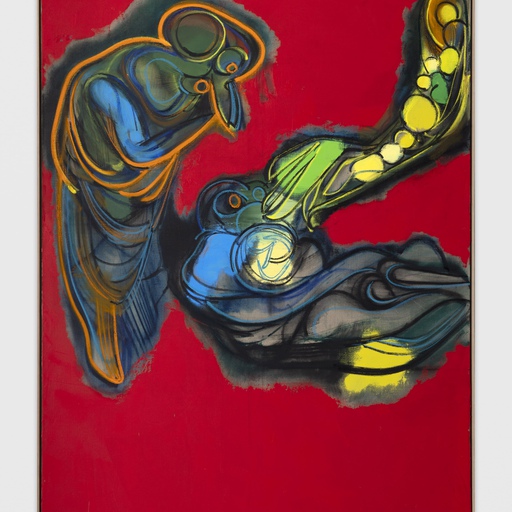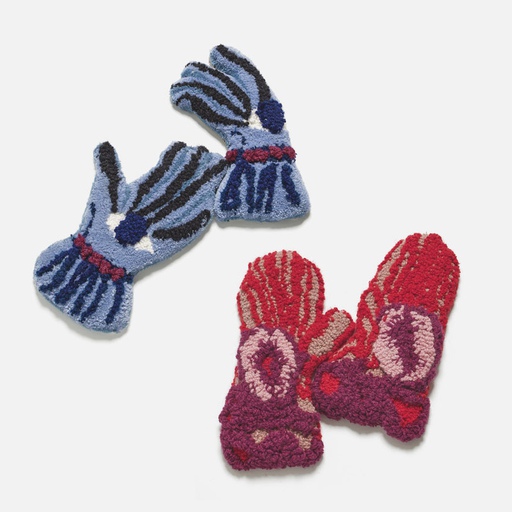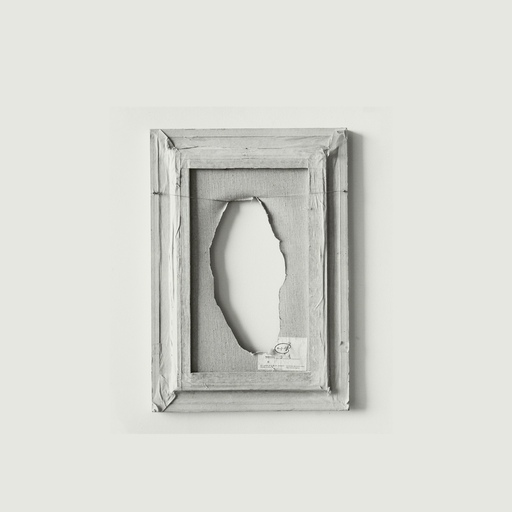“I know I’m not for everyone, and I’m definitely OK with that. I don’t want to please America or the world. I like that people don’t get my work. It makes me feel like I’m ahead of my time.”
In conversation, the Somali-born Nicola Vassell gallery affiliated artist Uman is as forthright and engaged as the bright, bold paintings she creates in her Albany, NY studio.
And she’s earned the right to be. Uman was born in Somalia in 1980 but her family were forced to move to Kenya in 1989, at the outbreak of the Somali Civil War.
She then relocated to Denmark as a teenager to live with family. She hasn’t returned to Africa in the intervening years, partly because she is a trans woman: “It’s a fantasy to think that I would go back and have rights,” she told ARTnews last year.

Zigzag Rolled on A Blunt, 2023 acrylic, oil and oil stick on canvas in artist’s frame 86 3/4 x 86 11/16 in 220.3 x 220.2 cm Photo Credit: Lance Brewer
Teenage visits to museums with an aunt in Vienna turned her on to art – “I just felt this great joy” - and in her twenties she decided to swap dream for vision with a move to New York.
Her paintings contemplate both the physical and spiritual, intertwining abstraction, figuration, meditative patterning and a reverence for the natural world.
For the first decade of the 2000s she sold them on the street, often in Union Square. Group shows in London and New York followed, and in 2015 she had her first solo show at White Columns, New York.
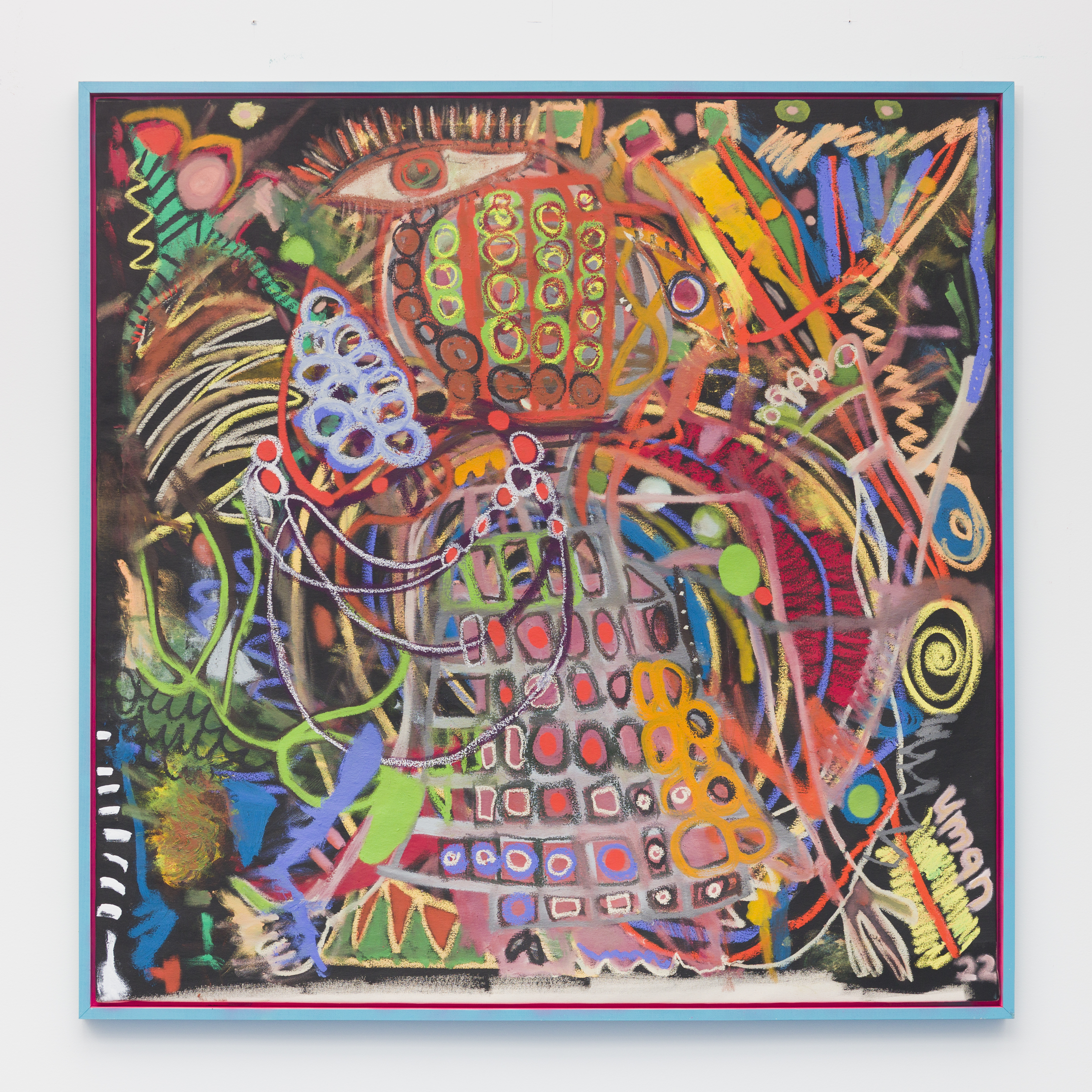
Uman - Untitled, 2022 acrylic, oil and oil stick on canvas 62 1/2 x 62 7/8 in 158.8 x 159.7 cm Photo Credit: Luis Corzo
However, she often attributes her big break to a psychiatrist, not a gallerist. Shortly after her move to New York she met Annatina Miescher who ran an art therapy program at Bellevue hospital.
She was somebody who opened a channel that I couldn’t possibly have opened myself,” Uman says. “I think that it’s always been inside me, I just didn’t know how to bring it out.”
Through Miescher, Uman met Rene Ricard, the painter and critic who helped launch the careers of Julian Schnabel and Jean-Michel Basquiat. With Ricard’s encouragement she focused on her painting. “He made me feel like I’m actually doing something,” she says.
Her process has been described as the cumulative layering of colorful acrylic paint over oil and pastel. “I use acrylics and then I finish with oils. I never use a lot of pigment because I like my work to look washy, like how watercolors look.”
“There are oil paints in my studio that I’ve had for over ten years. I squeeze just a little bit of paint at a time,” she told The Paris Review in 2022. "If you go to some other artists’ studios, you will notice that the floor is covered in paint. My place looks like a lab. I don’t like wasting paint, and I don’t like having a messy studio.”

Uman - Sumac Tree in Roseboom, 2022 - 2023 acrylic, oil and oil stick on canvas in artist’s frame 86 11/16 x 86 5/8 in 220.2 x 220 cm Photo Credit: Lance Brewer
“Color is very important. Some of the colors I use to remind me of what women used to dress like back in Somalia. I love happy colors. I love animation. My favorite colors are primary colors and I like bouncing bright colors off each other.”
Acknowledged influences include Chris Martin, Martha Diamond, Gerasimos Floratos , along with Picasso, Hilma af Klint and “anything by Matisse”. Meanwhile, Metallica, Mozart and – “when I’m depressed” – Philip Glass, provide the soundtrack in her studio.
That first show of paintings at White Columns was based on photos of herself through her transition. She still has one of them in her studio.
“You can see my body going through my transformation—one side of my chest in the collage was flat with my scar and the other side still had my implant. I wanted to memorialize that life, that past, glamorous life,” she told as if magazine in 2022.

Uman- Amapiano Dance, 2022-2023 acrylic, oil and oil stick on canvas in artist's frame 62 5/8 x 62 5/8 in 159.1 x 159.1 cm Photo Credit: Lance Brewer
“In a sense, everything I do is biographical on the canvas. The ones that don’t look like self-portraits are self-portraits,” she says. “I think everything I do now is a self-portrait in different ways. Even my abstract paintings, mythical in nature, are self-portraits. I love drama, and so I depict myself with several mouths, and several eyes, just like a creature.”
At the time of that as if interview in 2022, her father still did not know that she was a successful artist. “He doesn’t know that I was featured in the New York Times and had gallery shows because he would never understand it. This is somebody I send money to, who benefits from me making art, and he says, ‘you should try Islamic calligraphy, it's nobler my son’. I always say, yes, father. A lot of parents from that part of the world want their kids to do something that will keep up with appearances, something respectable, like going to law school.”
The place where she grew up, Mombasa, is right on the Indian Ocean. In some ways it was the very opposite of Somalia for her. “It’s very, very culturally rich, but I wouldn’t say art is valued. It’s just there. Growing up in a Muslim home isn’t conducive to being an artist like me, so my sketchbooks would always disappear, because the contents were offensive to my mom and everyone else in my family; so whoever found them would trash them.”

Uman - Grand Dame Uman, 2022 acrylic, oil, oil stick on cotton with a poplar artist painted frame 74 1/2 x 74 1/2 in 189.2 x 189.2 cm Photo credit: Adam Reich Photography
Because of her lack of formal training she’s quite often referred to as an outsider artist, although the terminology around her work does not seem to resonate with her.
“I don’t care how people define me or my work. They can put me in a box and say, ‘You’re self-taught. You have to stay right in that corner. You’re not welcome in our club, our museum.’ That’s fine. I’m just doing my job. This is my work,” she told ARTnews.
But don't take such dismissals as disengagement from the task at hand. “I am very emotional when it comes to painting. I do love feeling my way through the painting and allowing it to take me to different places in my subconscious.”
If you’re interested in Uman’s work you can see more of it at her gallery Nicola Vassell.
And be sure to follow Artspace on our social channels and sign up to our emails to be among the first to hear news of a very special Uman edition later this year.

Uman photographed by Joe Perez











